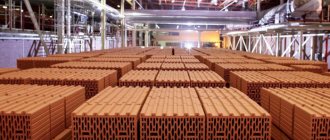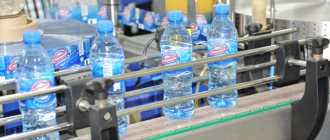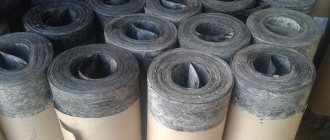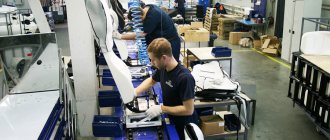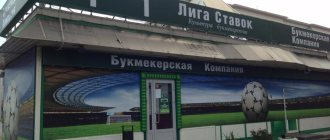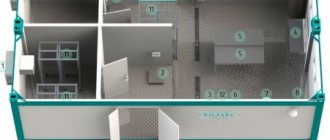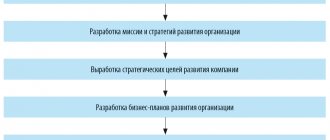Areas of application of sand
Below we list the areas where sand is used. By following the links, you can read in more detail about the features of its use in a particular area.
Main uses of sand:
- Construction work - For foundations - For concrete - For backfilling - For plaster and interior finishing - For drainage and septic tanks - For bricklaying
- Landscaping - For cushioning paving slabs - For leveling and raising the area - For backfilling the area - For sandboxes - For the beach
- Landscape design – For paths – For ponds
- Agriculture – To loosen the soil – To create fertile soil
- Production — For reinforced concrete products — For the production of paving slabs, bricks, artificial stone — For glass
- Abrasive work - For sandblasting
As you can see, this material has many uses. But mostly these are responsible jobs. For example, it is not advisable to use it for filling holes (it will be too expensive). At the same time, there are areas in which it cannot be replaced (for example, in filling children's sandboxes).
How to choose the right sand for your purposes and what to look for? We will talk about this further.
How much does 1 cube of river sand weigh?
How much does 1 cube of river sand weigh?
Sand is considered the most important material for construction production. So it is better to be able to correctly calculate all its characteristic indicators, for example, what is the specific gravity in a cube of sand, density, volumetric coefficient, humidity. All this can affect the quality of work performed. Volumetric weight shows how much a cube of sand weighs in its natural state, wet and with all impurities. The specific gravity of a cube of such material is 1500 - 1800 kilograms, and the specific gravity of washed coarse sand in one cube is 1400 - 1600 kilograms. All the listed indicators are taken into account, and the value of the mass of raw materials is displayed.
Quarries are places of large-scale sand extraction. River sand is mined in smaller quantities compared to mining in quarries. Transportation of river sand is carried out using trucks that move along regular roads. A mining dump truck cannot travel this way without special permission. There are certain difficulties in this. It would be better to transport raw materials using more powerful technical means with good performance. After all, the economy of transportation due to the high load capacity of the dump truck could have a positive impact on the pricing policy of raw materials.
How is enriched sand obtained?
Enrichment, as a rule, consists of active and passive washing of the sand mass with water.
Active washing is carried out by blowing through the conveyor line with sand using high-pressure nozzles. In home and small-scale production, this function is perfectly accomplished by a professional or semi-professional high-pressure washer.
Passive washing is placing an ordinary sand mass in a container with water in a ratio of 1 to 3 and lying there for 3-5 hours until the clay particles soften and leave, followed by extraction. The use of semi-active enrichment significantly speeds up the process by washing quarry sand in an activator-type drum; in small-scale production conditions, a concrete mixer is ideal in a sand-water ratio of 1 to 2. In this case, 15-20 minutes of the process is sufficient.
Fractionation is carried out by dry sieving the sand mass on vibrating screens with the removal of calibrated fractions to a storage tank or simply to the work site. The intensity, processing time, number of simultaneously selected fractions, their threshold sizes can be flexibly changed through simple settings.
Modern dry sieving units work not only with sand, but also with granite chips/screenings/dolomite, limestone and other things, which significantly expands both functional and commercial production capabilities.
How to make money by drawing
Based on the above, it is not surprising that sand painting lessons for children are gradually gaining more and more popularity. This is why the business idea of opening a sand painting studio is becoming so popular.
You can make money sand painting even if you have absolutely no artistic talent. The roles of teachers and mentors will be performed by experienced craftsmen, and novice draftsmen can be hired as assistants.
Earning money from sand painting is possible in several formats:
- Sand show theater. Not the cheapest start, but there are many opportunities for earning money. You will need sound and lighting equipment, a protector that transfers what is happening on the glass to the big screen. We will need real masters of their craft, who can not only come up with an interesting plot, but also translate it into a mesmerizing spectacle.
- Studio for creating videos and cartoons, drawings and portraits from sand. Cartoons can be for both children and adults. Recently, companies have been ordering the creation of advertising videos from sand.
- Sand painting studio. A very promising direction, as it has no age restrictions. Classes can be arranged for very young children, older children, teenagers and even adults. It is possible to develop different programs, such as sand painting for pregnant women, corporate sand parties and much more.
- Freelance draftsman. You just need to purchase the necessary equipment and consumables. You can hold master classes or small shows at holidays, corporate events, children's birthdays, weddings or in children's institutions. You can promote your services through city notice boards or social networks. Distribute colorful flyers or brochures to various organizations.
Is sand worth the candle?
The most fundamental question is what is the profitability of such production and the possible payback period for the project.
Ordinary sand in various regions of the country costs from 150 to 250 rubles per ton, excluding delivery to the production site.
The price of enriched sand increases from 35 to 40% when shipped in bulk and up to 150% when shipped in packaged containers.
The costs of enrichment consist of the purchase of a concrete mixer with a volume of 0.25 cubic meters or more, water consumption at the rate of 2000 liters per ton of raw materials, taking into account the possibility of clarification and cyclic reuse, electricity 1.8-2.7 kW/h, wages, in case of attracting hired workers, rent for the use of the production site and tax deductions according to OKVED 08.12
The price of fractionated sand can increase, depending on the fraction and its quality, by 120-1800%, and when taring and packaging the material, rare fractions, especially for decorative needs, and more.
The price of a complex for sand fractionation by dry vibration sieving can range from 200 thousand rubles in a mobile version with low productivity, but with fairly wide functionality, up to 10 million rubles or more for stationary industrial installations with a full cycle.
Construction is a dynamically developing branch of the modern economy and the business of beneficiation and fractionation of sand can bring good dividends even to a novice entrepreneur.
Resale and delivery of sand
But to build a business, it is not necessary to have your own quarry; you can avoid the need to obtain a license (which is necessary for sand mining to be legal) by simply reselling it. You just need to find out where and who extracts sand and sells it wholesale.
Then you need to compare wholesale prices with market prices to understand the difference. Of course, at first glance it may not seem that big, but in fact, the main income in such a business will depend not on the cost of a cubic meter of raw materials, but on the price of the service of delivering the product to the buyer.
Types of cement and areas of their use
Many varieties of binders are produced with different performance and decorative characteristics. Main types:
- Portland cement. This fine gray powder with a greenish tint is the most common building material, widely used in individual, large-scale residential and industrial construction. Not applicable separately. Acts as a component of construction mixtures and solutions. In combination with sand and crushed stone, it is used in the production of concrete mixtures. Dry construction mixtures are made from cement and sand, sold packaged in bags, or plastic cement-sand mortars, delivered to the construction site in a form ready for use. Plasticizing additives regulate the setting time of the solution and other characteristics of the final product.
- Sulfate resistant . Resistant to chemically active environments. Used for concreting underground and underwater structures.
- Alumina . Gypsum and aluminous slag are added to the composition, thanks to which the binder quickly sets and acquires brand strength. Alumina cement is used in the construction of structures operating in high humidity conditions.
- Acid resistant . In its production, quartz sand and sodium fluoride are used. The mixing liquid is not water, but liquid glass.
- Portland slag cement . Slag granules are added to the composition of this binder (approximately 25%). The material is used in large-scale construction.
Calculating the density of river sand
Calculating the density of river sand
The average density of river sand used in calculations shows how much mass fits into one cubic meter. The performance properties of the material, the stability of erected buildings and the consumption of raw materials depend on this important indicator. The amount of raw material placed in 1 m3 definitely depends on the type of sand; fine-grained sand has the ability to be more compact than coarse sand, which leaves significant gaps.
Sand density is related to such important characteristics as material porosity, moisture content and compaction levels. There is such a pattern: the higher the moisture content of the sand and the larger the void between the grains, the less sand fits into a cubic meter. As for humidity, due to the adhesion of fractions, construction raw materials are significantly compacted. The formula of the building mixture includes, in addition to rock crystals, clay minerals, which contributes to better adhesion of the mass.
Grain structure affects sand density
The structure of the grains affects the density of the sand, as well as humidity and other material data. The performance indicator increases significantly as the grain size and the content of clay impurities decrease. After river sand is extracted, it is cleaned to prepare it for use in construction; after processing, it has a coefficient lower than natural river sand. Consequently, river sand washed in production has an average density coefficient of 1.4, and material that has not been processed has a coefficient of 1.5.
The true density of sand, no matter what its origin or the method in which it is mined, has a single mass measurement - this is kg m3, and is a constant value. In this case, dry material is measured, the ratio of body weight to volume is taken. The bulk density of sand indicates not only the volume of the mass, but also takes into account the gaps, so this type of density is lower than all its other indicators.
What is cement made from: composition and main raw materials
The composition of cement includes the following components:
- Lime (calcium oxide, CaO) – 60%.
- Silicon dioxide (SiO2) – 20%.
- Aluminum (alumina, Al2O3) – 4%.
- Gypsum and iron oxides (Fe2O3) – 2%.
- Magnesium oxide (MgO) – 1%.
The indicated percentage of the listed components is typical for the most popular type of cement - Portland cement. It may vary somewhat. It all depends on the production technology and class of cement products.
Important! The existence of different types and brands explains the lack of an exact chemical formula for cement. All important information is provided by indicators of mineralogical composition.
The main thing cement is made from is clinker. This is the name given to the product of firing the raw materials – limestone and clay, which are taken in a 3:1 ratio. Clinker is a semi-finished product for producing cement. After firing at temperatures up to 1500 °C, the clinker is crushed, as a result of which it is presented in the form of granules with a diameter of up to 60 mm.
During grinding, additives are added to the clinker composition:
- Gypsum (CaSO42H2O), which regulates setting times.
- Corrective additives (up to 15-20%), improving certain properties of cement: plasticizers, additives, etc.).
Different rocks are used as the main raw material for cement production:
- Carbonate type fossils. They can have an amorphous or crystalline structure, which determines how effectively the material will interact with other components in the composition when fired.
- Sedimentary origin. This is a clay raw material with a mineral base, which, when excessively moistened, becomes plastic and swells, i.e. increases in volume. The main feature of the material is its viscosity, which determines its use in the dry production process.
Carbonate rocks
Among the carbonate rocks used for cement production are:
- Marly limestone, or marl. Contains clay impurities, therefore it is considered a transitional material between carbonate and clayey rocks.
- Chalk is a type of smearing limestone, which is characterized by ease of grinding.
- Shell rock. It is characterized by a porous structure, which is not very resistant to compressive loads.
- Dolomite rocks. Of all types of carbonate rocks, they have the most valuable physical properties.
Clay rocks
Clay rocks used in cement production include:
- Clay. The main type of clayey rock with mineral inclusions in its composition.
- Loam. It differs from clay in the increased concentration of dust particles and sand fraction.
- Loess. Less plastic rock. It is more characterized by porosity, friability and fine grain. Loess may contain inclusions of quartz or silicate.
- Shale. Of all types of similar rocks, it has the highest strength. When crushed, shale is converted into plate-like particles. The material contains little moisture and is characterized by a stable granulometric composition.
Corrective additives
For the purpose of adjustment, special mineral additives are introduced into the cement composition. First of all, these are modifiers based on fossils containing:
- iron,
- flint-belite
- fluorspar,
- apatite,
- alumina.
Also, corrective additives can be provided by industrial waste from other industries. They are used:
- pyrite cinders;
- dust from blast furnaces;
- belite sludge;
- mineralizers.
The use of additives makes it possible to improve the characteristics of cement and concrete mortar, which is prepared on its basis. Each of the modifiers gives the mixture special properties, for example:
- CemFrio – has anti-frost, plasticizing and accelerating effects.
- CemPlast - allows you to obtain a highly mobile concrete mixture with increased workability, as well as increase the activity of the binder, i.e. cement, and ensure complete hydration.
- CemAqua and CemAquaStop are waterproofing, water-reducing, water-repellent surface treatment products.
- CemBase – increases the strength, frost resistance, water resistance and durability of concrete products.
- Plastix is a multifunctional water-reducing and plasticizing additive that increases the grade strength of concrete products.
- CemFix is an accelerator additive used for concrete mixtures that require high early strength.
What is quartz sand? Kinds
SiO2 is silicon oxide or a decomposition product of granites. It is obtained both naturally and artificially. Regardless of the method of production, high-quality material undergoes purification and division into fractions. The smallest species reaches 0.05 mm, the largest up to 3 mm. The best properties of sand are observed when it contains the maximum amount of quartz and is distinguished by a whitish or translucent color. Any admixture adds tone or color. As with all granular materials, cuboidality, roughness, and minimal flakiness are of great importance. When crushing quartz, a large number of smooth, sharp-angled textures are obtained, which are ineffective both in production and in construction.
When extracting quartz, the seized structure along with clay (kaolin) is supplied to processing plants. Dissolution in water, subsequent dehydration, calcination, and fractionation bring quartz sand to marketable condition.
Requirements for quartz sand:
should contain no more than 10% moisture, admixtures of clay and iron oxide should not exceed 1% of each element. In essence, this is a high-quality pure composition of silicon oxide. Not everything requires 98%. For silicate production, the material is divided into three groups A, B, C, which respectively contain 70, 60, 50 percent SiO2. The specifics of production of different products also impose different requirements on quartz sand. There is a classification according to purpose:
- 1. T - for production from dark glass;
- 2. C - for production from translucent glass;
- 3. B - colorless products;
- 4. PB - semi-white;
- 5. PS - reduced translucency;
- 6. BC - high translucency;
- 7. OVS and OVS - degrees of high translucency of products.
Application of quartz sand
In construction
Pure SiO2 composition is used to create reinforced concrete products and mixtures in pastel shades. Thus, concrete blocks and sand-lime bricks with a homogeneous substance are used for decorative and finishing works.
The same applies to plaster compositions used for external and internal work. Solutions with crushed quartz are the most reliable and aesthetically pleasing. The fine and clean composition resists the appearance of cracks and promotes a smooth surface.
The modern method of leveling the floor is called self-leveling. The peculiarity is that a person does not make any effort to create an even and smooth surface. The mixture contains crushed quartz, which promotes uniform spreading.
Most mixtures for compounding and filling on retail shelves are presented in the required mixed proportion. Manufacturers of building materials often purchase monomineral compositions, which are ideal for creating stable solutions.
Only the most expensive road coatings include silicon oxide in their composition to ensure strength and durability. The emphasis is on roads with increased loads, which require high asphalt strength.
Quartz sand in industry
Most types of cookware are made using pure fine quartz sand. Strength is the main quality that silicon oxide provides to glass, earthenware and porcelain. These are window and technical glass, automobile, laboratory, container, insulators, ceramic tiles.
This specificity flows into the pharmaceutical industry, where the substance is used for optical lenses, both clear and multi-colored. High abrasiveness allows you to create smooth and durable.
In foundry, molds are created on its basis.
The thermal conductivity of sand allows it to maintain heat for a fairly long period of time. The property is used both in production and at home. For example, an electric heated towel rail heats up and maintains its temperature for a long time.
In metal and stone processing it is used for grinding and engraving work. Service stations, plant for the production of machinery and equipment, stone processing enterprises, jewelry workshops use sandblasting equipment. The technological process consists in the fact that air mixed with sharp grains is supplied under pressure through a hose under strong pressure.
In water treatment plants
Adsorption (concentration of substances on the surface or in volume) is a property that is necessary to create modern filters. The ability to absorb all the smallest impurities is used in wastewater treatment plants, in the food industry and in the production of household appliances. The disadvantage of sand is that it must be constantly changed. The positive side: quartz sand is a useful component that nourishes water with microelements. Less quality material is used to filter water in swimming pools.
Sand is a fine-grained, loose sedimentary rock consisting of grains of minerals from destroyed rocks. Natural sand is a loose mixture of grains 0.14-5 mm in size, formed as a result of the destruction of hard rocks. It consists mainly of grains of minerals (quartz, feldspar, mica, etc.), small fragments of rocks, and sometimes particles of skeletons of fossil organisms (corals, etc.). The grain sizes in sands usually range from 0.1 to 2.0 mm.
Sands are classified according to grain size:
- coarse-grained (2.0-1.0 mm.),
- coarse-grained (1.0-0.5 mm.),
- medium grain (0.5-0.25 mm.),
- fine-grained (0.25-0.01 mm.).
The shape of the grains can be rounded, semi-rounded, angular and acute-angled - depending on the origin and duration of grain transfer.
By origin, sand can be river, lake, sea and bottom, and by composition - quartz, glauconite-quartz, arkose, magnetite, nepheline, mica, polymict, etc. Most often, quartz and polymict sands are found with a greater or lesser admixture of other mineral components (clay, mica, chlorite, iron oxides, feldspar, glauconite, carbonates).
Often sands are monomineral quartz, and then consist of almost pure quartz. Depending on the conditions of occurrence, natural sands can be river, sea, mountain, or ravine. River and sea sands have rounded grains, mountain sands contain acute-angled grains. Mountain sands are usually more contaminated with harmful impurities than river and sea sands.
As a result of natural cementation of sands, sandstones are formed. The term sands in geomorphology is used to designate flat areas covered with a more or less thick sandy cover.
How cement is made
How and from what cement is made at the plant is explained in general terms by the diagram:
According to it, the production of cement mixture occurs using the following technology:
- Extraction and grinding of rocks from which clinker is formed. It, as we already know, consists of ¾ clay, and ¼ limestone. The easiest way is to use marl, which has the same composition. But, firstly, this fossil comes in different types and not all of them are suitable for clinker production. Secondly, reserves of marl in nature are limited, and its formation takes millions of years. Therefore, most often the main components of cement are extracted separately and mixed at factories in the required proportion.
- The thoroughly crushed mixture is placed inside the oven, where it is fired at a temperature of about 1500°C for 4 hours. By the end of processing, the effect of granulation of the melted mass is achieved.
- Next, the resulting granules are cooled and crushed to a powder using special drums. Grinding uniformity is achieved by sifting the powder through a sieve with a certain mesh size.
- The ground clinker is mixed with other ingredients, then temporarily stored in silos, and then sent for packaging and storage.
DIY printed concrete - easy!
This cement production technology remains the same for all methods of its production.
Dry method
This is a relatively fast and economical method of producing cement. It is divided into several stages:
- The extracted raw materials are continuously delivered to the plant, where they are crushed by several crushers.
- The resulting granules are then dried to simplify the next steps.
- Dried particles of clay and limestone are mixed in the required proportion and ground to obtain cement flour.
- The powder is placed in a furnace, where it is fired without sintering.
- After this, the cement is packed into bags or sent to storage using special machines.
Dry production is suitable for homogeneous raw materials with low humidity. At the same time, large energy costs for drying the components are not required.
Wet method
If wet material is used in the production of cement or the ingredients require thorough mixing, the wet method is used.
- Clinker is prepared by adding clay and limestone to water. The result is a mushy, viscous mass—sludge.
- Pumps pump it into the furnace shop, where the sludge is sent for firing. The furnace is a long rotating structure. There the material is melted and turned into clinker.
- After firing, the granules are cooled, crushed and ground together with gypsum and other additives.
- At the final stage, the cement is packaged and prepared for storage.
The wet method allows you to save energy when mixing raw materials, since it is easier to do it in a semi-liquid state. However, sludge burning uses much more fuel than dry pellets. Therefore, wet cement production is more expensive.
Combined method
This method consists of mixing the components, mixing them with water, and then removing the liquid and continuing to process the raw materials using the dry method. The production stages look like this:
- The raw material mixture is mixed to form sludge.
- Using a vacuum or a press, moisture is removed from it.
- The resulting pieces of “crumbs” enter the rotary kiln and further stages are carried out using the dry method.
Having an idea of how and what cement is made from, it is easy to understand how important the quality of raw materials and adherence to technology are in the manufacture of this building material.
Equipment and production process
The first thing you should do to start production is to find or build a premises.
When choosing where to most advantageously locate production facilities, you can choose one of two principles:
- Close to raw materials.
Somewhere near your plant there should be a source of inexpensive materials for making cement.
- Closer to people.
If you already understand that you will have many customers, you can choose a location for the plant near large settlements or industrial centers.
Be sure to locate the plant in a non-residential area. The room must be large - at least 400 square meters. meters. Keep in mind that the permissible ceiling height is from 4 meters (otherwise you will not be able to place the equipment correctly).
Be sure to take into account: the production of cement systematically harms the health of workers. Minimize the risk by ensuring that the ventilation in the building works perfectly.
How successful your business will be and how quickly it will grow largely depends on where you source your raw materials. You can start production with purchased raw materials. But in the future it is worth considering the option of organizing your own sources of its production.
Let us remind you that the quality of the final product directly depends on the quality of the raw material base - protect your business from unscrupulous suppliers.
The next stage is the acquisition of equipment for cement production.
Full cycle cement production equipment
| 1. Limestone crusher. |
| 2. Mill for grinding products. |
| 3. Mill-mixer for clay. |
| 4. Ball tube mill. |
| 5. Kiln. |
| 6. Industrial refrigerator for cooling clinker. |
| 7. Dust settling chamber, electric precipitator. |
| 8. Tanks, slurry basins. |
| 9. Pumps for feeding raw materials. |
| 10. Bunker for waste gases. |
| 11. Equipment for packaging and shipping of cement (bags of 5, 20 and 50 kg). |
In addition to individual installations, you may also consider purchasing a mini:
Depending on the manufacturer, on average, the cost of all equipment will be about 500 million rubles. Additional expenses: about 250 million rubles for installation work, and set aside another 50 million for unforeseen purposes. In total, be prepared to spend at least 800 million rubles.
Cement production occurs continuously and around the clock. In this regard, work at the enterprise should be divided into three shifts.
A mandatory point is technical safety. All production employees must wear special clothing, masks and respirators. Quantitatively, to operate a mini-factory you will need 96 people: 86 general workers and 10 administration and management people.
Every month, the entrepreneur will spend about 1,600,000 rubles on the salary fund of 96 employees, of which 1,376,000 rubles. - for production personnel, and 240 thousand - for administration and management.
When calculating salary costs, there is also an additional +30% on the insurance premium.
Cement production from A to Z. How is cement produced?
Registration of business rights for sand extraction
Sand mining, like any other business that you choose as a business that brings you income, is subject to state registration and documentation. For this type of activity, the best option would be to register a limited liability company (LLC).
By the way, if you have the time (and sometimes the nerves), then without major problems you will be able to complete all the paperwork that the tax and other authorities will require yourself.
However, future entrepreneurs often turn to professionals, including companies specializing in paper preparation. It will cost a certain amount of money. But in return you get a quick process, and what’s more, they will do almost everything for you, and you won’t have to waste any time or nerves.
In addition, you will need to decide which form of taxation will be most suitable in your case. We recommend choosing a simplified system. But if possible, still consult with a professional about the current state of affairs in the field of registration of rights.
Further, in order to develop a particular sand quarry, registration of the right to use it will be required. And along with this, you will need to obtain a special license for the quarry. By the way, such a license is not given for more than a period of five years. But in the future there are ways to extend it.
Also, when registering a business, you will need to select the appropriate OKVED codes. It is better to familiarize yourself with the list in advance and select all the necessary ones so that in the future there will be no difficulties with completing the work. Here are the most necessary ones:
- 14.21 Development of sand and gravel quarries
- 14.22 Extraction of kaolin and clay
In order for quarry mining to proceed completely legally, one should not forget about state standards numbered 8736-93 “Construction sand. TU" and 4417-75 "Quartz sand for welding works".
Production of clinker-free cement
The raw materials for clinker-free cement are blast furnace or hydraulic slag, activators and other additional components. A mixture of prepared components taken in the required proportions is crushed and ground to a fine state. Clinker-free cement is characterized by:
- resistance to various environmental influences;
- economical production due to low energy consumption;
- recycling of waste from metallurgical and other industries, which has a positive effect on the environment;
- different colors and properties of the final product, which can be obtained without changing the main stages of the technological process and using additional equipment.
Sources
- https://zen.yandex.ru/media/id/59ff74e877d0e60307593a7c/59ff801b168a91070ee565b5
- https://gruntovozov.ru/chasto-zadavayemiye-voprosy/primenenie-peska/
- https://vipidei.com/proizvodstvo/pererabotka/frakcionirovanie-peska/
- https://udarnik.spb.ru/vse-o-cemente/sostav/
- https://cemmix.ru/clauses/vse-o-tsemente-sostav-raznovidnosti-sposoby-proizv
- https://kvartirnyj-remont.com/iz-chego-delayut-czement.html
- https://biznesprost.com/otkryt-biznes/proizvodstvo-cementa.html
[collapse]
